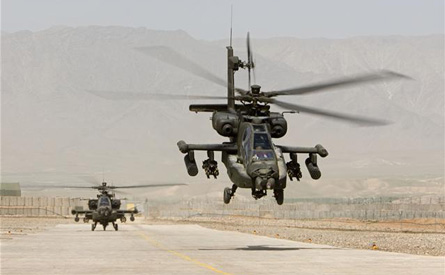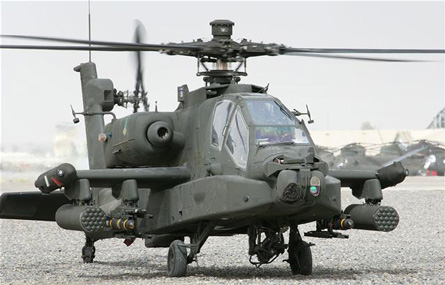The Netherlands plans to upgrade its entire inventory of 29 Boeing AH-64D Apache Longbow attack helicopters to the US Army's Block II configuration, with the deal to be worth more than $180 million.
"Having the same aircraft configuration as the USA would greatly contribute to its [the Netherlands'] military capability, making it a more capable and sustainable coalition force to support overseas contingency operations," the US Defense Security Cooperation Agency says. The body notified Congress of the proposed deal on 6 August.
If approved, the Block II upgrade will cover the delivery by Boeing of 29 aircraft modification kits, plus spare parts, personnel training and other services, the DSCA says.
Now operated by the Netherlands Defence Helicopter Command, the Dutch Apache fleet was delivered between 1999 and 2002, according to Flightglobal's HeliCAS database. The D-model aircraft are powered by General Electric T700-701C engines.
The Netherlands maintains a permanent commitment of five Apaches at Tarin Kowt in Afghanistan's Uruzgan province, including two held at quick reaction force readiness.
 |
|---|
© Dutch defence ministry |
The detachment totals over 70 personnel, including seven pilots, with these deployed for a duty period of three months at a time, 301 Sqn commander Lt Col Onno Eichelsheim said at IQPC's Military Helicopter conference in London earlier this year.
Dutch Apaches flew 2,500 missions totalling 4,500 flight hours in Afghanistan in 2007-8, says Eichelsheim. The aircraft launched 225 Lockheed AGM-114 Hellfire air-to-surface missiles, 6,000 unguided rockets and more than 45,000 30mm cannon rounds during this time, he adds.
 |
|---|
© Dutch defence ministry |
The Netherlands had identified operational shortcomings with its current aircraft configuration due to its lack of common communications equipment with ground forces and an inability to exchange streaming video of potential targets.
In the longer term, the Dutch defence ministry is also expected to take its Apache fleet to the US Army's new Block III operating standard.
Source: Flight International
















